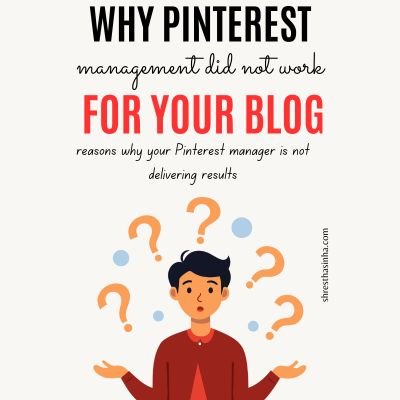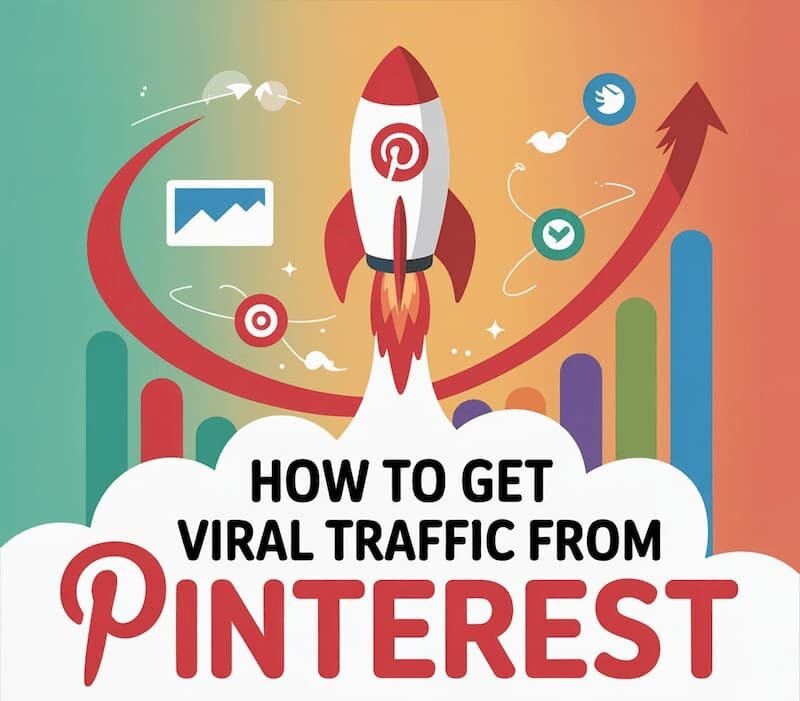7 Reasons You Don’t Have a Pinterest Management Client (And Why That’s Totally Normal)
Starting out as a Pinterest Manager is exciting, but landing clients? That can be a real headache. I’ve been there.
I’ve pitched, followed up, and delivered work that clients barely appreciated.
And yet, through these experiences, I’ve realized something crucial: not landing clients or ending up with toxic ones isn’t always about your skills.
Sometimes, it’s about mindset, boundaries, and finding the right match.
Here are the 7 main reasons you might not have a client yet, and why that’s okay.
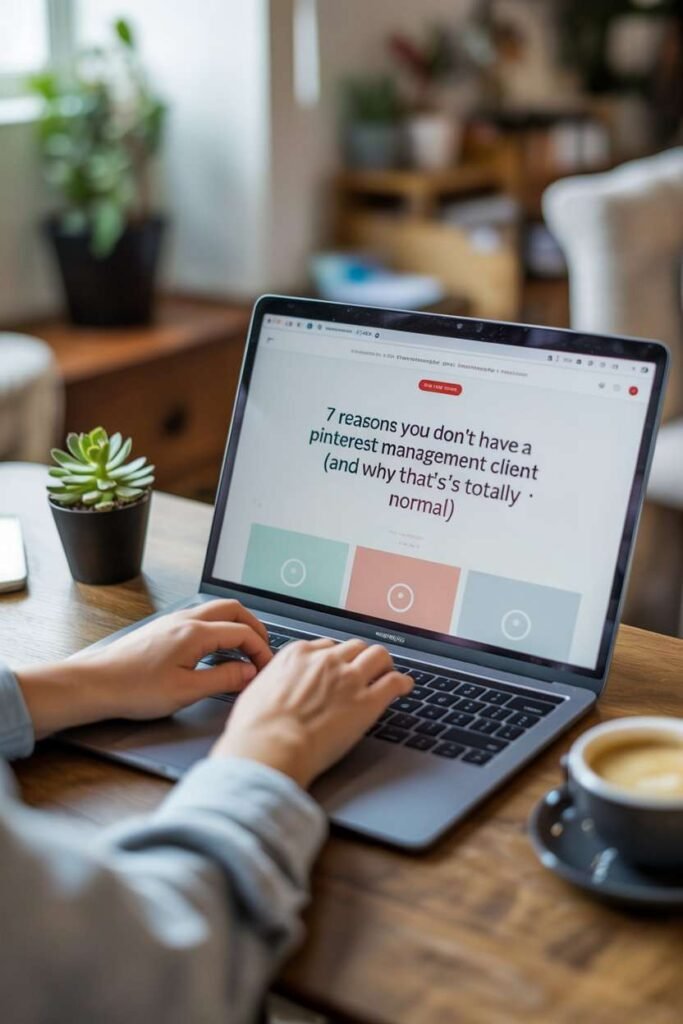
1. Lowballers Who Don’t Value Your Work
Let me be real with you. I once worked with a client who made over $10k a month from her blog, yet she offered me $299 a month for 8 pins per day.
As a newbie, I took it, thinking any experience was good experience. But wow… she was rude, distrustful, and constantly questioned my work. She made it impossible for me to do my job properly.
Looking back, I ask myself: why did she hire me? Was it to prove something?
Honestly, I don’t know—but I do know this: clients who lowball and disrespect your time are toxic. They devalue your skills and make your work feel like a burden instead of a collaboration.
The lesson? Don’t take work just because it’s a “foot in the door.” Your expertise and time are worth real investment. If someone can’t see that, they’re not the client you want.

2. DIYers Who Think They Know Everything
Pinterest looks simple from the outside: pin some images, write a few captions, and traffic. Many people think, “Why hire someone when I can do it myself?”
The problem is, they often don’t realize what goes into strategy, consistency, and tracking results.
DIYers may technically know the basics, but some set terms that make it impossible for a manager to succeed like demanding impossible results on a low budget or micromanaging every pin. Then, when results don’t come, they blame the manager.
The truth: you can’t convince everyone to hire you, and that’s fine. Your job isn’t to fix everyone’s Pinterest, you’re here to help those who actually value expertise and want results. Focus on clients who are willing to invest in your knowledge.
3. You’re Targeting the Wrong Niche
I spent months stuck in one niche, wondering why clients weren’t coming. I had skills, results, and even portfolio examples but no one was reaching out. The problem? My audience was too narrow.
Then my friend suggested I expand my niche, everything changed. Suddenly, I had inquiries, clients willing to pay fairly, and projects that matched my skill set.
If you’re not getting clients, it might not be your fault, it might just be that your target audience doesn’t see how you can help them. Broaden your focus and explore niches where your skills solve real problems.
4. Toxic Clients
Some clients are just… impossible. They undervalue your work, act entitled, and think they can get premium results for pennies. They dont stop there, they micromanage, blame, and drain your energy.
These clients are more than just “difficult”, they’re toxic. They make you question your worth, your skills, and your sanity.
Trust me: it’s better to wait for clients who respect your expertise than to work with someone who sees you as a free or cheap resource.
If you’ve ever left a client feeling stressed, frustrated, or unappreciated, it’s not your fault. That’s a sign to set boundaries and be selective.
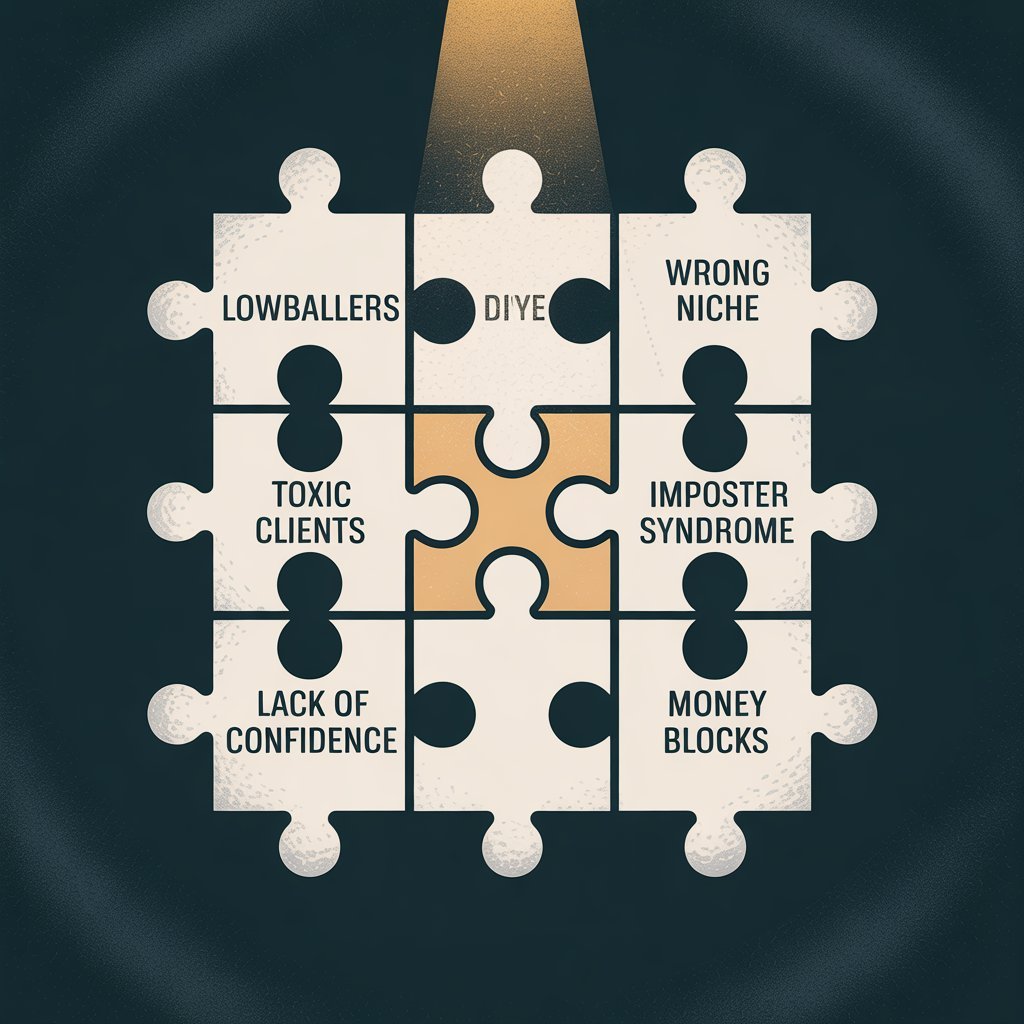
5. Imposter Syndrome
Even after delivering results, I sometimes catch myself thinking: “Am I really qualified? What if I fail?” Imposter syndrome is a silent killer for freelancers and managers alike.
It makes you second-guess your pricing, delay pitching, and undervalue your skills.
But here’s the truth: clients hire you for your ability to strategize, execute, and show up, not for perfection. You don’t have to know everything; you just have to consistently bring value and results.
Recognizing imposter syndrome and pushing past it is key to attracting the right clients and maintaining confidence in your work.
6. Lack of Self-Confidence
Confidence isn’t arrogance, it’s understanding your worth and being unapologetic about it. When you undervalue yourself, clients notice.
They’ll try to negotiate you down or treat your work like it’s optional.
Many new Pinterest Managers accept low rates just to “get experience.” Yes, experience matters, but so does respecting your own value.
Stand firm on your pricing, showcase your results, and only work with clients who appreciate your skills.
Confidence attracts the right clients and repels those who are just there to take advantage.
7. Money Blocks
Sometimes the biggest reason you don’t have clients is internal. Maybe you feel you don’t deserve success, or that charging “too much” is greedy.
These money blocks can silently prevent you from pitching confidently, negotiating well, or attracting the clients you deserve.
Breaking these mental barriers is just as important as mastering Pinterest strategy.
When you shift your mindset and truly believe you’re worthy of fair pay, your business will reflect it.
You’ll stop accepting lowball offers, and the right clients will start reaching out.
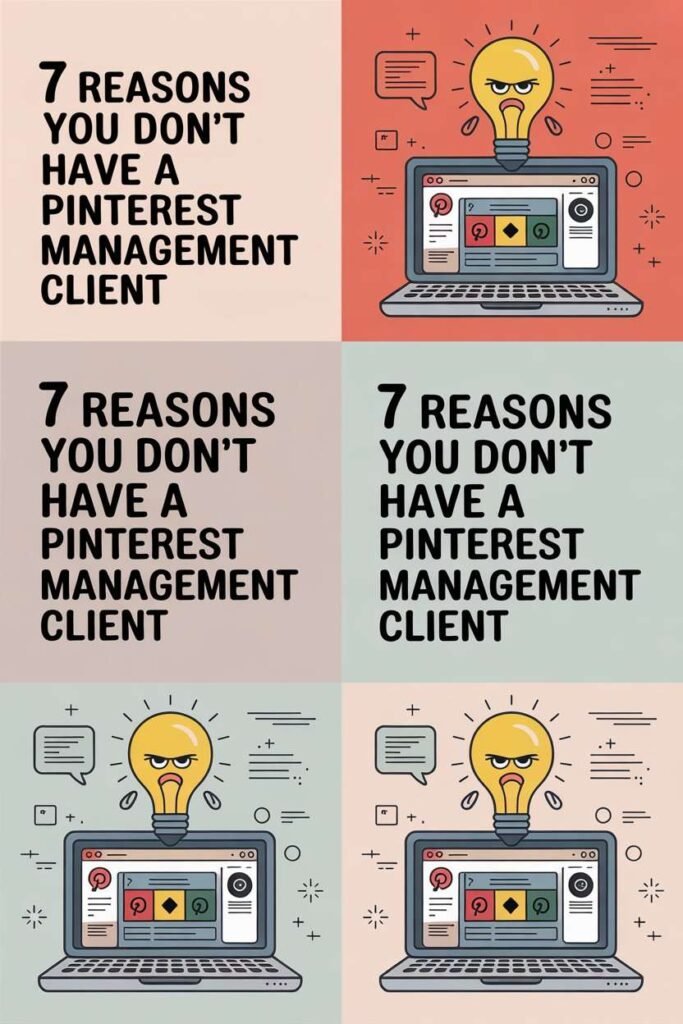
Final Thoughts
Not having a client isn’t a reflection of your talent or worth. Sometimes it’s the clients, they’re cheap, toxic, or impossible to please.
Sometimes it’s mindset, you undervalue yourself or feel undeserving. And sometimes it’s just timing, you’re still finding your niche or building your portfolio.
The key is: don’t settle. Wait for clients who respect your work, pay fairly, and let you do what you do best. When the right clients find you, everything clicks. You’ll feel confident, valued, and excited to show up every day.
Your time, energy, and expertise are valuable. Protect them, invest in yourself, and the clients who truly appreciate your work will follow.



